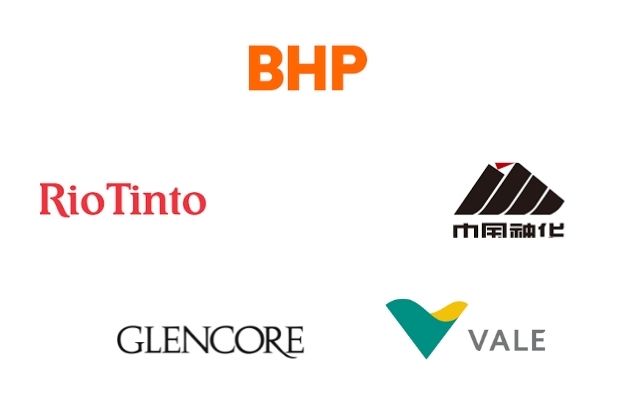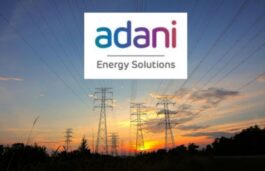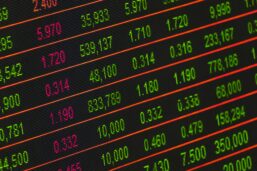Highlights :
- While there is much to be dissappointed about when it comes to emission reduction goals set by top miners, the focus on renewable energy as a key component is good news for RE developers.
- The global mining and minerals industry could single handedly generate demand for over 100 GW of renewable energy, if they make a concerted bid by 2030.

A mining company can never walk away from environmental damage and pollution. With the sentiments now focused on bringing down the emissions to achieve net-zero carbon emission targets, the top miners have also set their emission reduction goals. This article lists down the net-zero targets and measures by top mining companies based on their market capitalization.
UN Climate Action plan states that in order to avert the worst impacts of climate change and preserve a liveable planet, global temperature increase needs to be limited to 1.5°C above pre-industrial levels. To do that, emissions need to be reduced by 45% by 2030 and reach net zero by 2050.
Many miners had been under pressure from environmental activists and shareholders. Thus, they have committed to net zero by 2050 in direct and indirect emissions. However, Mining has a “decarbonisation challenge”. The sector has to reduce emissions while producing metals, such as nickel and copper. Such metals are vital to a lower-carbon economy.
Thus, going green comes with expensive up-front costs for mining companies. In some cases, there also arises the need for the invention of new, lower emissions technologies to squeeze out the carbon. But there is an upside as well. Socially conscious investors and funds are looking to put money into companies with low emissions, increasing their valuations.
In our list, note that, Scopes are categories of emissions set by the Greenhouse Gas Protocol. Scope 1 covers direct emissions from owned or controlled sources, while scope 2 covers indirect emissions – for instance from the generation of electricity. The scope 3 covers all other direct emissions from the value chain.
#1 BHP Group
Market Cap – $225.59 B
Net Zero Target – 2050
BHP Group is the largest among the mining companies in the world on market capitalisation. The company mines and produces coal, uranium, petroleum, iron ore, copper, and natural gas. It operates in Australia, China, Japan, South Korea, India, South America, and North America. The Australian mining leader was the 79th largest public company on the Forbes Global 2000 list.
BHP is a party to a net-zero pledge by members of the International Council on Mining & Metals. The Anglo-Australian miner is pursuing the goal to reach carbon neutrality by the year 2050. In 2020, the world’s biggest miner confirmed that it will cut its greenhouse gas emissions by “at least” 30% by 2030 from its adjusted 2020 levels for Scope 1 and 2 Target. For the scope 3 as well, the firm set a goal to support development of technologies capable of 30% emissions intensity reduction in integrated steelmaking. Further, it aims a short-term target of maintaining operational emissions at or below FY2017 levels by FY2022. But these are unmet as BHP’s operational emissions have been higher than its baseline for every year since FY2017.
BHP’s decarbonisation strategy focusses on decarbonising electricity supply as a priority. Electricity constituted 38% of total Scope 1 and 2 emissions in FY2021. Consequently, in FY2020, BHP entered four renewable power purchase agreements (PPAs) to supply electricity to its Escondida and Spence copper mines in Chile. In addition, the firm signed another renewable PPA to meet half of its electricity needs across its Queensland coal mines. Interestingly, Queensland’s state-owned CleanCo will supply electricity from its portfolio of hydroelectric and gas generation from January 2021, with new solar and wind generation to progressively supply electricity from late 2022. The company expects these PPAs to be sufficient to meet its short-term target.
Its project in 2022, the Northern Goldfields solar and storage project, includes a 27.4MW solar farm at BHP’s Mt Keith open pit nickel mine. It also encompasses a 10.7MW of solar and a 10.1MW battery at the Leinster open pit and underground nickel mine. This will help reduce its scope 2 emissions at its Northern Goldfields operations by 12 per cent. A 40-50MW of capacity may also be added to the project soon.
#2 Rio Tinto
Market Cap – $106.00 B
Net Zero Target – 2050
The second largest of the mining companies in the world, in terms of market cap, is London based Rio Tinto. Founded in 1873, company produces iron ore, copper, diamonds, gold and uranium. The company is present in more than 30 countries.
Rio Tinto’s short-term target is to reduce absolute emissions by 15% by 2025. The firm further has its medium-term goal that involves its maritime shipping of products. It aims to reduce the emissions intensity of its chartered and time-chartered fleet by 40% by 2025. Rio Tinto has made its climate change commitments in 2021. It committed to a 50% reduction in Scope 1 and 2 equity emissions by 2030, with a US$7.5 billion backing for the cause. However, the company refrained from applying the same ambition to its Scope 3 emissions. Notably, the scope 3 emissions comprise 95% of its total carbon footprint.
To cut down its emissions, renewable energy is the first priority for Rio Tinto. Moreover, in 2021, electricity constituted 45% of Scope 1 and 2 emissions. Rio Tinto intends to reduce emissions from its electricity supply by developing repowering solutions for its Australian Boyne and Tomago smelters. This would include deploying solar and wind renewables at scale. Further, 1GW rapid development of renewables to support supply to Pilbara operations is also a part of its pipeline. So far, 34MW of solar with a 45MWh battery has been approved for decarbonising the Pilbara operations. This would start in 2022. In addition, Rio Tinto has signed a Statement of Cooperation with the Queensland government to develop central Queensland into a sustainable industrial hub.
It is worth noting that Rio Tinto does not have explicit, measurable targets covering its most material Scope 3 emissions. The long-term goal sets 2050 as the Net Zero target year from its shipping. This only accounted for 0.9 per cent of its total Scope 3 emissions.
#3 China Shenhua Energy
Market Cap – $79.67 B
Net Zero – 2060
China Shenhua Energy Co. is China’s largest listed coal company. Shenhua is a listed unit of state-owned China Energy Investment Corp., which is the country’s biggest coal mining company with output of 570 million tons last year. It is also one of the world’s biggest renewable power developers, with more than 41 gigawatts of generating projects.
The mining major, Shenhua, plans to shift nearly half its capital spending to clean energy by the end of the decade. The company plans to spend at least 40% of its annual capital expenditures on renewable energy by 2030. This is stark in comparison to 0.08 per cent last year. The firm seeks to peak emissions by 2025 and achieve carbon neutrality by 2060.
#4 Glencore
Market Cap – $75.65 B
Net Zero – 2050
Glencore plc is an Anglo-Swiss multinational commodity trading and mining company with headquarters in Baar, Switzerland. In the 2020 Forbes Global 2000, Glencore was the 484th-largest public company in the world. Glencore was the number one in the list of mining companies in the world (revenue-wise) as of 2021, with an annual revenue in 2020 of approximately 142 billion U.S. dollars.
In June 2021, Glencore updated its emissions reduction targets. Company’s short-term targets include emission reductions by 15% by 2026 on 2019 levels. The company’s Medium-term target seeks to reduce emissions by 50% by 2035 on 2019 levels, whereas its Long-term “ambition” (not the target) is net-zero emissions by 2050. Glencore is one of the few major miners to have set targets inclusive of their Scope 3 emissions. Its GHG emissions performance is highly correlated with coal production as the products, mostly made up of coal and some oil, contributes more than 90% of Glencore’s total carbon footprint.
In order to reduce its Scope 2 emissions further, Glencore has a number of renewable projects planned or recently completed. This includes upgrade to Inga Hydroelectric Project (DRC) (completed); supply from wind PPAs for Asturiana de Zinc (Spain), 2021-40; wind and solar at the Raglan mine (Canada) (completed); Glencore-Merafe ferrochrome renewable energy project, 2021-27.
#5 Vale S. A.
Market Cap – $73.94 B
Net Zero – 2050
Vale S.A is a Brazilian multinational corporation engaged in metals and mining. It is one of the largest logistics operators in Brazil. Vale is the largest producer of iron ore and nickel in the world. The mining company also produces manganese, ferroalloys, copper, bauxite, potash, kaolin, and cobalt. It also operates several hydroelectricity plants, and a large network of railroads, ships, and ports used to transport its products.
Vale’s goal is to reduce carbon emissions by 33% by 2030, based on 2017 emissions. Further, it aims to reduce its suppliers’ emissions by 15% by 2035, based on 2018 emissions. Ultimately, the company has set a goal to become net zero by 2050 in operations. Vale’s direct emissions come from our its own operations (Scope 1) and indirect emissions come from the purchase of electric energy in the market (Scope 2). The mid-term goal seeks to reduce to 9.5 MtCO2e by 2030, in line with the ambition of the Paris Agreement. The emissions from its Scope 3 (value chain) represent 98% of Vale’s total carbon load. Thus, countering that, the company has set a target to reduce its net emissions by 15% by 2035 (based on the year 2018).
The firm contracted Nextracker to supply smart solar trackers for its Sol de Cerrado solar project in Minas Gerais, Brazil. The 766 megawatt (MWp) solar complex will help power Vale’s mining operations in the Jaíba area of Minas Gerais. It will be one of the largest solar complexes in Brazil. Once operational, the Sol de Cerrado solar project will provide 13 per cent of the company’s total energy needs in Brazil. It would also offset GHG Protocol Scope 2 emissions.
The Measures Are Not Enough
While the ambitions and targets seem to align with global targets, without clear guidelines and accountability, there is a risk of unclear targets, empty promises, and greenwashing. Apparently, fewer companies have committed to scope 3 than to scope 1 & 2. Even if they did, the targets set for scope 3 are less ambitious. There’s lack of clear guidelines and targets. Even the measures taken are limited. Most of the companies have ambiguous targets. All gargets at this stage are mostly about using more renewable energy, which is simply not enough.
On an average the mining companies have committed to reduce 35 per cent of emissions in 11.8 years. That is less ambitious than the average of all companies. Across all companies in the database the average target is for a reduction of 44.6% in a timeframe of 12 years.
To avoid the most significant consequences of climate change, the rise in global temperature needs to stay below 1.5°C above pre-industrial levels by 2050. However, the latest report from the IPCC Change shows that the current trajectory will result in global warming of between 2.2 and 3.5°C by then.
For the global mining industry, the target of 2050 in general will have to be brought forward to at least 2040, to make a meaningful impact before it all goes to hell really.



























